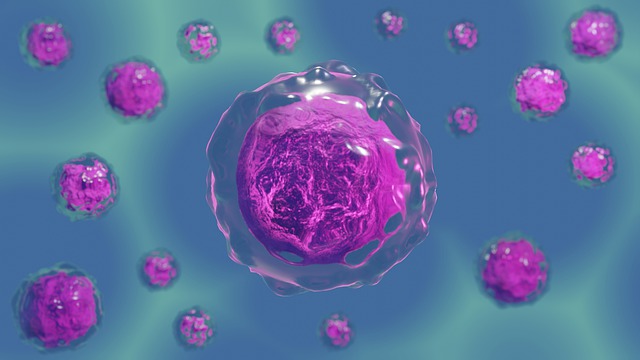
The nucleus in each of our cells is the site which contains and protects DNA, our genetic information. All the information that enters and exits the nucleus does so through specialised doors, enormous molecular machinery which, acting as tireless gatekeepers, take charge of monitoring the traffic in and out of the cell’s control centre. This machinery is known as the nuclear pore complex or NPC and with more than 550 copies of more than 30 different proteins it is one of the biggest protein structures in a cell.
Proper performance of the NPC is essential, because even small defects in its functioning can carry grave consequences in the form of serious illnesses such as leukaemia, cardiac problems or neurodegenerative diseases. The enormous size and complexity of the NPC has made it one of the of Holy Grails of structural biology, which has taken decades attempting to unravel the secrets of its structure in order to understand its function and be able to repair it when incorrect functioning triggers an illness.
Recently, as part of an international consortium of laboratories, the Ikerbasque Researcher Javier Fernández Martínez, team leader at the Biofisika Institute, has participated in identifying the detailed structure of the NPC in S. cerevisiae, an organism which is used as a model when research is undertaken on processes occurring in living beings.
This work has been published in the prestigious science journal Cell, one of the top three in the world. The research has entailed a complex analysis that combines multiple techniques, involving cryomicroscopy and cryo-electron tomography, proteomics, computational biology and cell biology. The research has shown how the NPC is capable of varying its diameter in order to adapt to the transport of large-scale molecules and to the different transport flows necessary for cell life.
The results of this study have answered one of the questions that structural biology has been tackling for years: whether all NPCs in one nucleus are the same. The research has revealed that at least three types of NPC co-exist in one nucleus in S. cerevisiae, suggesting the fascinating possibility that each one of these forms of NPC is specialised for a type of function or that it transports specific types of proteins and or nucleic acids.
This discovery opens up a new line of research oriented towards the study of the different identified forms of NPCs and their role in the development of pathologies, which could lead to the development of more specific and effective medicines.
Javier Fernández Martínez is an Ikerbasque Researcher and team leader at the Biofisika Institute, as well as Research Assistant Professor at The Rockefeller University of New York (USA). Javier studied biology at the University of Alicante and did his doctorate in science at the Complutense University of Madrid, after developing his doctoral thesis at the Margarita Salas Centre for Biological Research (CSIC) in Madrid. After a residency at the San Juan Institute for Neurosciences, he moved to the Laboratory of Cellular and Structural Biology of the Rockefeller University in New York, where he specialised in the study of the structure and function of the principal regulator of communication between the nucleus and the cytoplasm of the cell, the NPC. He is the author of more than 30 articles, some of which have been published in the best scientific journals worldwide, such as Nature, Cell and Science. He has been the recipient of prestigious research grants, such as the Ramón y Cajal, and he is the principal researcher in projects for the R+D+i programme of the Ministry of Science and Innovation (Spain) and the National Science Foundation (USA).
For more information about the article: doi: 10.1016/j.cell.2021.12.015
.png)
